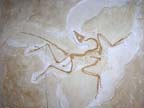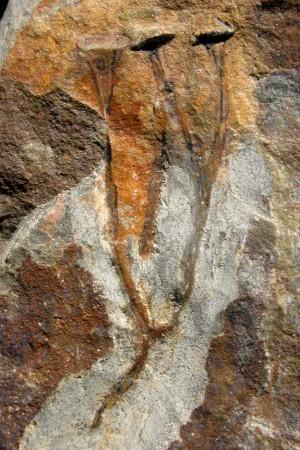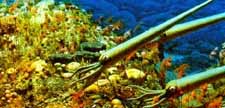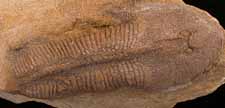 |
 |
 |
 |
 |
Produced
by the Population Genetics and Evolution class, Furman University |
||||
 |
 |
 |
 |
 |
Produced
by the Population Genetics and Evolution class, Furman University |
||||
 |
The
Silurian |
 |
||
 |
The Silurian is marked by several important radiations. One that must rank highly is the evolution of vascular plants. The fossil spores found in the Ordovician were likely from non-vascular, moss-like or liverwort-like plants. By the late Silurian, plants such as Cooksonia and Baragwanathia had colonized land and had evolved vascular tissue in response to the desiccating conditions of terrestrial life. In the oceans, the Silurian is marked by the radiation of many kinds of jawless ("agnathan") fishes, including the heterostracans, the anaspids, and the osteostracans (which had paired fins). In addition, the first jawed fishes evolved: the acanthodians and the placoderms that would dominate the Devonian seas. True reef-building corals evolved in the Silurian, as well; and molluscs like Platyceras and the othocone nautiloids were abundant. Although the Ordovician extinction dealt a significant blow to trilobite diversity, other arthropod lineages were robust and radiating. This was particularly true of the chelicerates; the eurypterids were abundant,and had given rise to marine scorpions like Proscorpius. Their chelicerate cousins, the spider-like trigonotarbids, evolved and colonized land. And the xiphosurans, an interesting marine group that includes the horseshoe crabs, evolved and radiated. So, by the end of the Silurian, there were plants and arthropods on land and jawed fishes in oceans, lakes, and rivers. |
 |
||
| Above: Platyceras fossil; Photo From: Geological Survey of Iran Below, Silurian reef from: Milwaukee Public Museum | Above: Cooksonia fossil; from: Hans Steur Below: Osteostracan fish fossil, from: The Lapworth Museum of Geology, University of Birmingham, UK. |
|||
 |
 |
|||